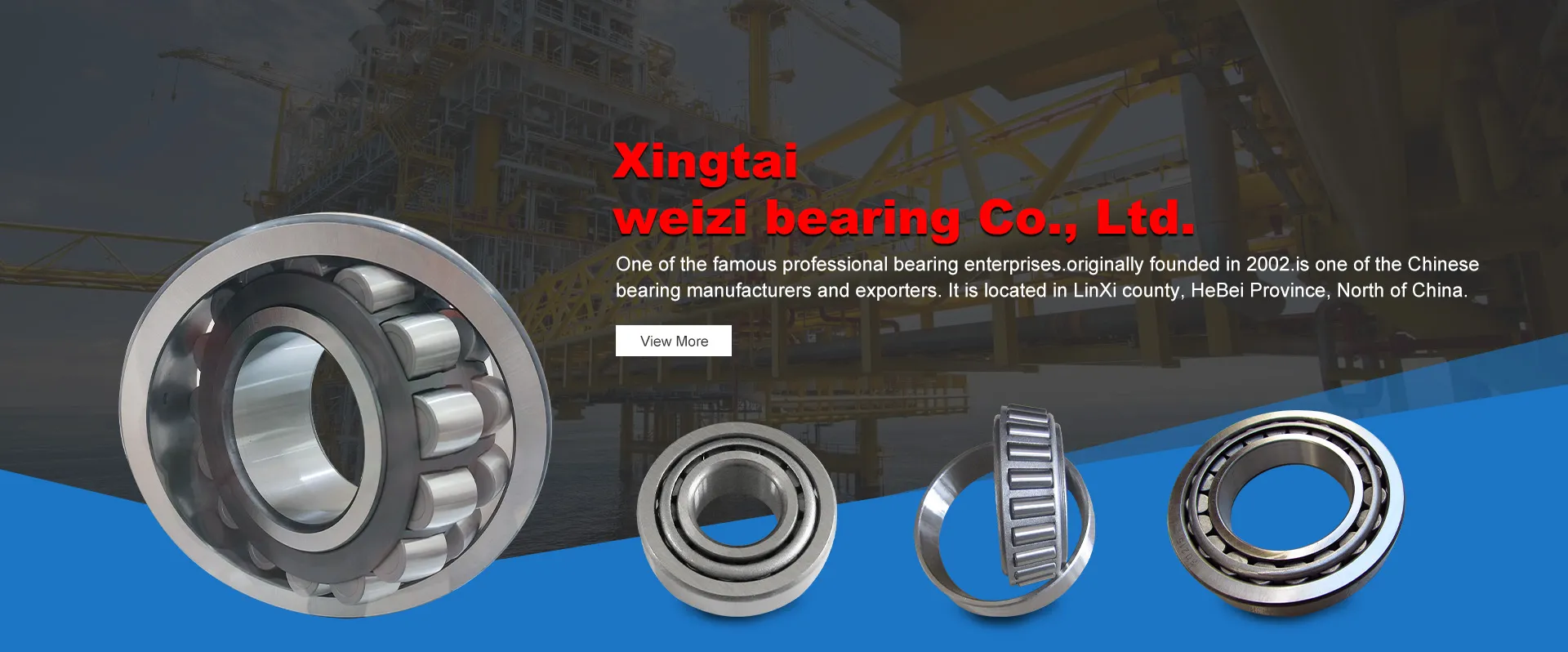
Nov . 08, 2024 23:28 Back to list
Exploring the Pros and Cons of Tapered Roller Bearings in Various Applications
Advantages and Disadvantages of Taper Roller Bearings
Taper roller bearings play a crucial role in various mechanical applications, particularly in vehicles, machinery, and industrial equipment. These bearings are designed to accommodate both radial and axial loads, making them highly versatile. However, like any engineering component, they come with their advantages and disadvantages. In this article, we will explore the key benefits and drawbacks associated with taper roller bearings.
Advantages of Taper Roller Bearings
1. High Load Capacity One of the standout features of taper roller bearings is their ability to support significant loads. Because the rollers are tapered, they effectively distribute weight across a larger surface area within the bearing. This load-bearing capability makes them ideal for heavy-duty applications, such as in automotive wheel hubs and industrial machinery.
2. Efficient Performance Taper roller bearings are designed to minimize friction. The rolling motion of the tapered rollers reduces the surface contact that occurs in standard ball bearings. This characteristic results in less heat generation and improved overall efficiency, which can extend the service life of both the bearings and the equipment they support.
3. Angular Load Handling Another advantage of taper roller bearings is their ability to handle axial loads in addition to radial loads. This dual capability allows a single bearing to perform multiple functions, simplifying design and reducing the number of components required in a machine. It also enables efficient handling of thrust loads in applications such as gearboxes and rotating machinery.
4. Self-Alignment Taper roller bearings exhibit excellent self-aligning properties, which means they can tolerate misalignment between shafts and housings. This is particularly important in dynamic systems where alignment can change due to factors like thermal expansion, vibration, or load shifts. Self-alignment helps maintain optimal performance and reduces wear over time.
5. Durability Made from high-quality materials, taper roller bearings are known for their durability. They can withstand harsh operating conditions, including extreme temperatures and corrosive environments. Their robust construction contributes to longer service intervals, resulting in lower maintenance costs and enhanced reliability.
taper roller bearing advantages and disadvantages

Disadvantages of Taper Roller Bearings
1. Complex Installation While taper roller bearings offer several advantages, their installation can be more complex compared to simpler bearing types. Proper alignment and adjustment of the bearing clearance are critical for optimal performance. This may require specialized tools and experienced personnel, increasing initial setup costs and time.
2. Sensitivity to Misalignment Although taper roller bearings can accommodate some misalignment, excessive misalignment may lead to premature wear or failure. Care must be taken during both installation and maintenance to ensure the alignment remains within acceptable limits. Regular monitoring is essential to avoid potential issues.
3. Cost Compared to other bearing types, taper roller bearings may come with a higher price tag, particularly when considering high-performance options or specific customizations. While their durability may offset these costs in the long run, initial investment can be a barrier for some applications.
4. Maintenance Requirements Taper roller bearings require regular maintenance to ensure longevity, particularly in high-stress applications. Routine inspections and re-greasing can be necessary, which adds to the operational workload. Failure to maintain these bearings can lead to decreased performance and increased risk of failure.
5. Space Constraints In applications where space is limited, taper roller bearings may not always be the best fit. Their design requires specific dimensions for optimal functionality, and accommodating this size within compact machinery can pose a challenge.
Conclusion
In summary, taper roller bearings offer a range of advantages that make them suitable for many demanding applications, especially where high load capacity and efficiency are paramount. However, they also come with inherent drawbacks, including installation complexity and maintenance requirements. When selecting the appropriate bearing type for a specific application, it is essential to weigh these factors carefully to determine the best balance between performance, cost, and maintenance. Understanding both the advantages and disadvantages of taper roller bearings can lead to more informed decisions, ultimately enhancing machinery performance and longevity.
Latest news
-
Premium Deep Groove Ball Bearings | High Speed & Reliability
NewsAug.29,2025
-
Durable Scaffolding Clamps - Secure & Reliable Tube Connectors
NewsAug.28,2025
-
Common Failures in Thrust Ball Bearings and Solutions
NewsAug.22,2025
-
How Tapered Roller Bearings Can Take Shock Loads
NewsAug.22,2025
-
Angular Bearings in High-Precision Spindles
NewsAug.22,2025
-
The Impact of Misalignment on Cylindrical Roller Bearing Performance
NewsAug.22,2025
